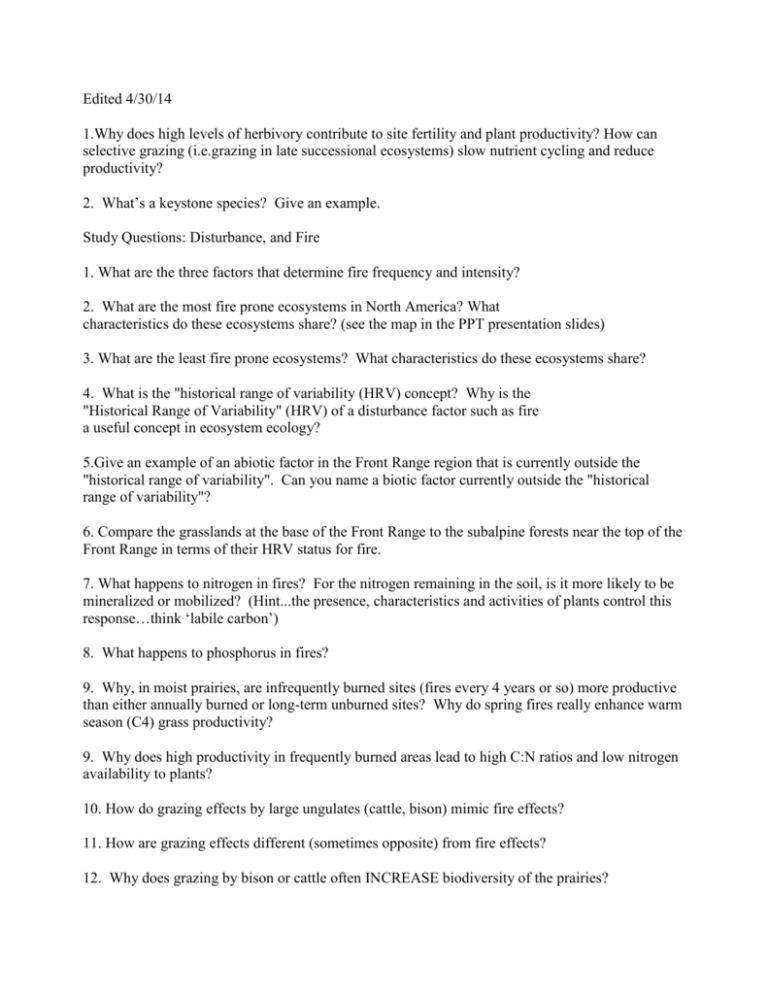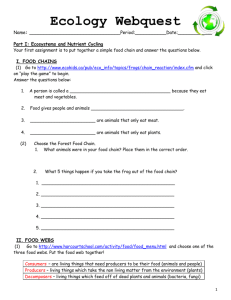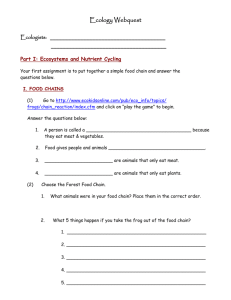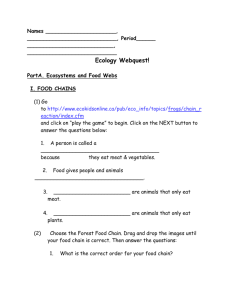grazing, fire and disturbance
advertisement

Edited 4/30/14 1.Why does high levels of herbivory contribute to site fertility and plant productivity? How can selective grazing (i.e.grazing in late successional ecosystems) slow nutrient cycling and reduce productivity? 2. What’s a keystone species? Give an example. Study Questions: Disturbance, and Fire 1. What are the three factors that determine fire frequency and intensity? 2. What are the most fire prone ecosystems in North America? What characteristics do these ecosystems share? (see the map in the PPT presentation slides) 3. What are the least fire prone ecosystems? What characteristics do these ecosystems share? 4. What is the "historical range of variability (HRV) concept? Why is the "Historical Range of Variability" (HRV) of a disturbance factor such as fire a useful concept in ecosystem ecology? 5.Give an example of an abiotic factor in the Front Range region that is currently outside the "historical range of variability". Can you name a biotic factor currently outside the "historical range of variability"? 6. Compare the grasslands at the base of the Front Range to the subalpine forests near the top of the Front Range in terms of their HRV status for fire. 7. What happens to nitrogen in fires? For the nitrogen remaining in the soil, is it more likely to be mineralized or mobilized? (Hint...the presence, characteristics and activities of plants control this response…think ‘labile carbon’) 8. What happens to phosphorus in fires? 9. Why, in moist prairies, are infrequently burned sites (fires every 4 years or so) more productive than either annually burned or long-term unburned sites? Why do spring fires really enhance warm season (C4) grass productivity? 9. Why does high productivity in frequently burned areas lead to high C:N ratios and low nitrogen availability to plants? 10. How do grazing effects by large ungulates (cattle, bison) mimic fire effects? 11. How are grazing effects different (sometimes opposite) from fire effects? 12. Why does grazing by bison or cattle often INCREASE biodiversity of the prairies?











